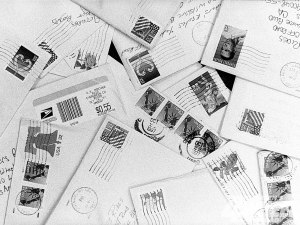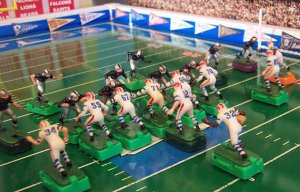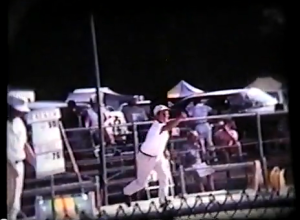 A few months shy of the third anniversary of my Dad’s death, my sister, brother and I gathered in the house my Mom plans to sell. We met to clean out my Dad’s art room. Toward the end of World War II, my Dad illustrated cartoons for Stars & Stripes Magazine — he also served in an Artillery Brigade on Okinawa — and for decades he worked as a technical illustrator for a printing-press manufacturer.
A few months shy of the third anniversary of my Dad’s death, my sister, brother and I gathered in the house my Mom plans to sell. We met to clean out my Dad’s art room. Toward the end of World War II, my Dad illustrated cartoons for Stars & Stripes Magazine — he also served in an Artillery Brigade on Okinawa — and for decades he worked as a technical illustrator for a printing-press manufacturer.
In the years before the term “man cave” was invented, my Dad had one. This particular “cave” was filled with Marty Robbins cassettes, comic books, books about comic books, and bulky Dean Martin VHS tapes. He had files and files of art projects in various stages of completion and, cut out from magazines and newspapers, photographs he intended to draw. When you start following the paper trail of a loved one, you are bound to meander down a path of surprises, and my Dad’s was no exception. I learned that after retiring, he intended to learn how to cook. The only time I remember my Dad near a stove, he was clutching a fire extinguisher and dousing a grease fire he’d started while cooking hamburgers. But here I stood leafing through a collection of recipes from a short stack of late 1980’s Somerset Press newspaper cooking inserts.
My Dad’s presence was everywhere in the art room. I wasn’t all that surprised when the woman hired to paint the interior of the house rolled through the rooms quickly until she started working in this one. There she felt slightly unnerved, and shared her concerns with my sister. Later, the painter re-entered the room and said softly, “I’m not here to do any harm. I just want to pretty the room up a bit.” Then she finished the job.
I was cleaning out the art closet when I found a cardboard box on a shelf. I read the brief note written in my father’s strong, neat script — written before Parkinson’s Disease would strip him of his ability to draw and paint — and held it up for my sister to read. “Hmmm, oh boy,” she said.
We carried the box out to the living room coffee table, and I opened it. Inside were three thick bundles secured in thick rubber bands. I handed a packet to my brother and sister, and kept the third for myself. I carefully removed the rubber band without poking my own eye out. I balanced the pile on my lap and started to slowly leaf through the contents: Dozens of birthday, anniversary and Christmas cards my Dad had saved from Mom, us kids and the grandchildren. Notes written in loopy child-like scribbles — we must have been about Penelope’s age when we gave him some of these cards.
I glanced over at my brother sitting next to me on the couch. He was sorting through a batch of amusing notes and cards from friends and relatives that must have tickled Dad’s funny bone. Uncle Archie sent him a photo of a pumpkin-headed scarecrow sitting on a lawn chair in his front yard with a long note that began, “I’ve been sitting out here waiting for you to come visit…”
My sister had a pile of thank-you notes my father received for favors that, for the most part, I never even knew about. Teachers’ bulletin boards he decorated, a sick nun/teacher he visited in the hospital, cartoons he drew for picnics or parties: People whose lives he touched in some small way who remembered his kindness. I even found notes from the five exchange students I befriended in college who stayed at my home one spring break. Also in the package were two identical notes written in pencil on small white pieces of paper: “Be in front of Grants at 8 p.m. I’ll be there at 8:01 p.m.” The night my parents first dated, we suspect.
When Penelope gives me a drawing, or a note, or a scribble, I can’t seem to throw it out. At times, I curse my sentimentality. I’ll feel flickering moments of melancholy brush past that fill me with happiness and sadness at the same time. I may struggle with understanding why I feel that way, but I know from where it comes.
I looked again at the note Dad wrote across the top of the cardboard box: “More important than money.”








